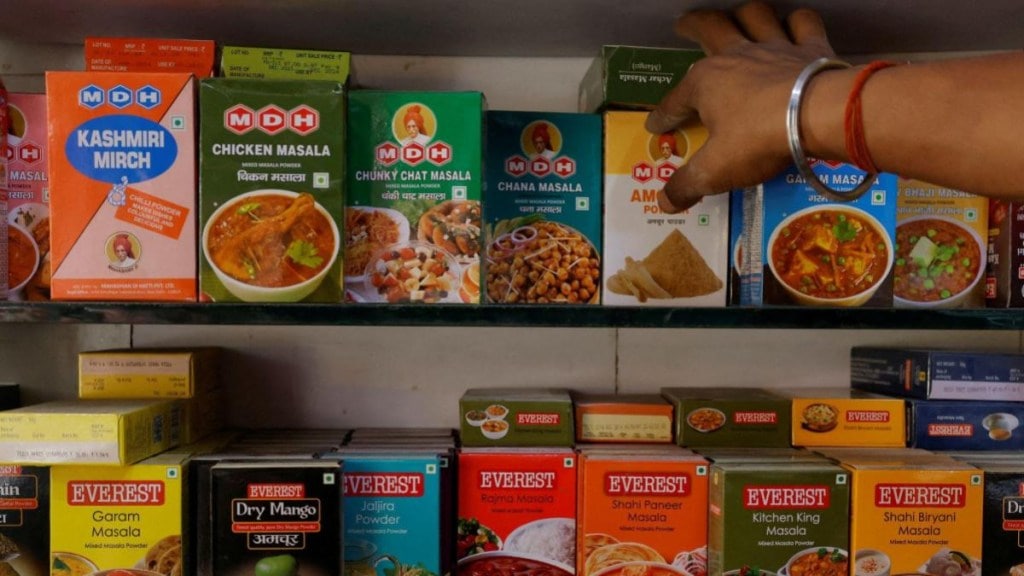India’s curry powder is getting too hot for it to handle, but it’s an issue that’s been cooking for a while now. The controversy over its spices for unwarranted levels of pesticides and chemicals is not a new one, and a lackadaisical approach by the authorities concerned has brought $4.25 billion worth of exports under question.
In September 2019, the United States initiated a recall of MDH’s sambhar masala over contamination with salmonella, a bacteria that causes gastrointestinal illness. A similar recall was initiated last year against Everest’s sambhar masala and garam masala, and Maggi’s Masala-ae-Magic. Just between October 2023 and May 3, 13 of 65 shipments of MDH (about 20%) were rejected by the United States after they failed checks for salmonella. These shipments included mixed spices and seasonings. In FY 2022-23, about 15% of MDH’s shipments were rejected. About 3.7% of Everest’s shipments were rejected in the same fiscal.
The European Food Safety Authority has frequently flagged the use of ethylene oxide, banned in the European Union, in Indian spices. As per a recent report by the EFSA, carcinogenic chemicals were found in a whopping 527 products from India, including spices and herbs, between September 2020 and April 2024.
In 2015, Saudi Arabia banned Indian green chillies for high pesticide residues. And a few years back, France restricted the sale of an Indian chilli powder brand over the presence of Sudan Red, a carcinogenic colouring agent. Moreover, India’s Spice Board has mandated the sampling and testing of ethylene Oxide (EtO) residues for all spice shipments to Singapore and Hong Kong, effective May 7.
Indian authorities tepid, formulaic
“The response from Indian authorities has been tepid and formulaic. Following international criticism, both the Spices Board and the Food Safety and Standards Authority of India (FSSAI) began routine sampling, yet no definitive statements about spice quality have been issued by these or any other government agencies,” said a May 1 report by Global Trade Research Initiative (GTRI), a private think tank, in the wake of the recent spice controversy. “This lack of clear communication is disappointing,” it added.
The Spices Board India, which works for the development, promotion, and regulation of the export of spices and spice products, came out with an advisory for exporters to prevent ethylene oxide contamination. In 2021, too, when the EU flagged the presence of ethylene oxide in spices exported from India, the Spices Board issued a similar advisory as it has done following the current backlash. “Exporters are advised to test their raw materials, processing aids and finished goods for ETO contamination. On instances of ETO detection, exporters shall not export the products to EU,” it had said then. The commerce and industry ministry, on May 7, made the testing and sampling of ethylene oxide residue mandatory for all shipments to Hong Kong and Singapore. Incidentally, in February 2022, India had mandated testing for ethylene oxide for spices shipments to the EU, as per a circular issued by the Spices Board.
Right before Hong Kong and Singapore had flagged contamination in Indian spices, the FSSAI, in an order issued on April 8, relaxed pesticide norms for spices and herbs, increasing the maximum residue limit by tenfold to 0.1mg/kg from the previous 0.01mg/kg. Warnings by activists that the relaxation would not only increase pesticide consumption among domestic consumers, but also cause increased rejections in foreign markets fell on deaf ears.
“With nearly $700 million worth of exports to critical markets (United States, Hong Kong, Singapore, Australia, and Maldives) at stake, and potential losses soaring to over half of India’s total spice exports due to cascading regulatory actions in many countries, the integrity and future of India’s spice trade hang in a delicate balance,” said GTRI in its report. Notably, India exported spices worth approximately $692.5 million to these countries in FY2024.
India is the world’s biggest producer and exporter of spices, having a 12% global share in FY24. Chilli tops the list of major spices exported, followed by cumin and turmeric. China is the biggest importer of Indian spices, followed by the US and Bangladesh.
And, if China, influenced by actions by other countries, implements similar measures, the “potential repercussions could affect exports valued at $2.17 billion, representing 51.1% of India’s global spice exports,” the report added. If the EU, which anyway flags Indian spices routinely, follows suit, an “EU-wide rejection could impact an additional $2.5 billion, bringing the total potential loss to 58.8% of India’s worldwide spice exports,” the report warned.
“Despite denials of any wrongdoing by major companies like MDH and Everest, their continued rejections by international bodies should have raised alarms with both the Spices Board and FSSAI much earlier. If the quality of products from top Indian firms is questionable, it casts doubt on the integrity of spices available in the Indian market as well,” GTRI said.
Domestic consumers worried too
A survey by LocalCircles , post the controversy, found that over seven in 10 Indians are worried about the quality and safety of the spices they eat. Not just that, almost 36% of the 12,300 people across 293 districts surveyed said they “had no confidence” that the FSSAI had the capacity or willingness to uphold its mandate. A routine food surveillance at a Hong Kong shopping hub last month brought India’s spices under global scrutiny. After Hong Kong stopped the sale of four spice mixes by Everest and MDH over the presence of ethylene oxide, a Group 1 carcinogen, Singapore followed suit and not only recalled Everest’s fish curry masala, but also advised those who consumed it and had health concerns to “seek medical advice.”
Maldives, currently in a diplomatic spat with India, outrightly banned the sale of MDH and Everest products. The United States is “aware of the reports and is gathering additional information about the situation,” its Food and Drug Administration (FDA) said, as did the food regulators of Australia and New Zealand.

